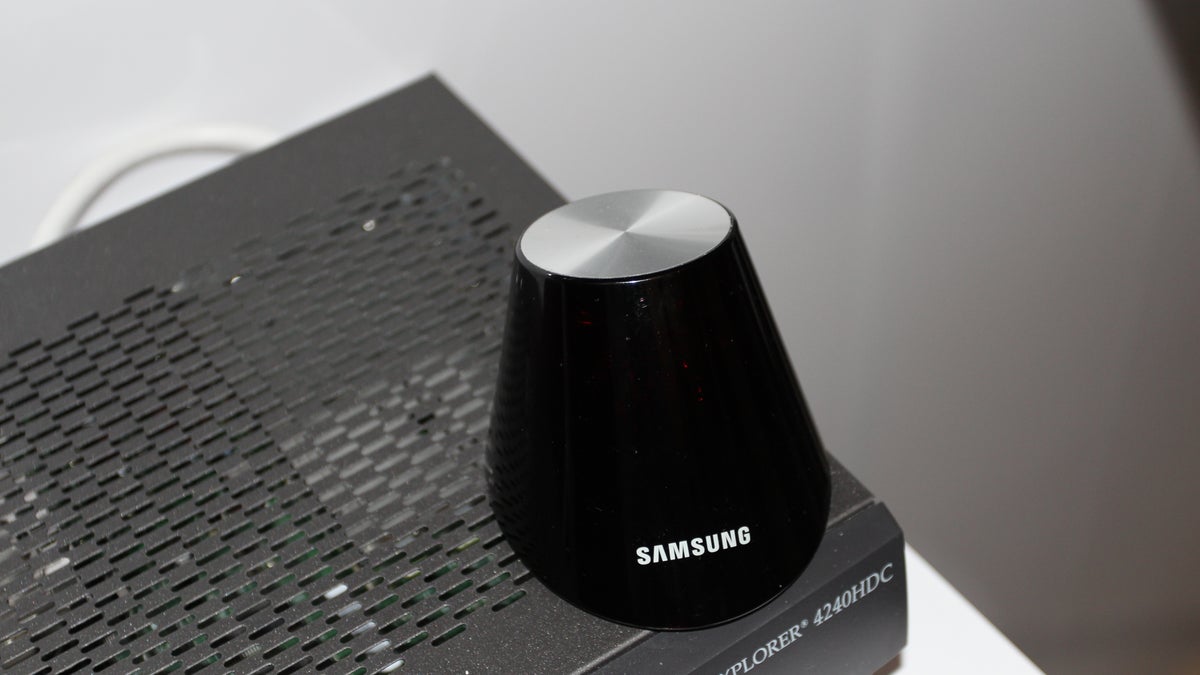Samsung Smart Interaction TVs get cable box control
Samsung's best TVs announced at CES 2012 are able to control your cable box via a Bluetooth IR blaster module.

LAS VEGAS--The highest-end plasma and LED TVs Samsung announced at CES yesterday offer a feature called Smart Interaction, which among other functions allows volume and channel changes at a word or gesture. Most TV watchers, however, use a cable box and not their TVs to change channels.
The solution is an IR blaster, a device designed to send infrared signals (just like a remote control) to operate the box. The little device pictured above handles that duty for Samsung's 2012 Smart Interaction models, namely the UNES7500, UNES8000, and PNE8000 series.
The TVs communicate with the blaster via Bluetooth, as opposed to wires like most conventional devices use. A Samsung rep told CNET that the battery-powered blaster is designed to be placed somewhere discreet in the room, not necessarily directly in front of the cable box. He also couldn't say whether it would allow control of volume via an AV receiver but did allow that the device probably wouldn't allow advanced operations like DVR control, at least at launch.
I think anything that integrates control of multiple devices through one interface is a good thing. Toshiba's 2012 high-end TVs, like the L7200 series, integrate blaster-based cable box control as well, and while both systems are destined to seem clunky, there's little alternative as long as cable boxes dominate the American TV landscape.

